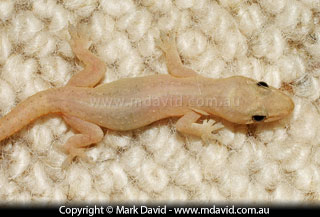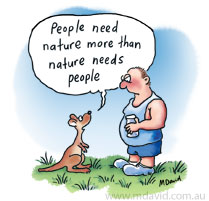
At first glance these pinkish-brown lizards are seriously cute. But the closer you look, the muddier their story becomes.

The camouflage pattern on the Asian House Gecko even extends over the eyes, although maybe that pattern isn’t needed as much since they started moving into people’s houses.
Getting to Australia
It’s not certain how they got to Australia, but the most likely explanation is they arrived as stowaways in shipping containers coming from Asian ports. First noticed in Darwin, they were soon also popping up around northern Queensland. Now these little dudes are firmly established in northern Australia, with their range extending throughout coastal Queensland, and their numbers spreading out from the Brisbane area in recent years.


This specimen conveniently shows a bunch of features that help identify an Asian House Gecko. The toes have claws, and spines running from the lower back extend down the tail, (except on parts of the tail that have regrown after falling off).
Different names
It’s usually called the Asian House Gecko (Hemidactylus frenatus) but it’s also called the Common House Gecko or Pacific House Gecko.
What do they look like?
Cute. I’ve got a bunch of pictures on this page to give an idea. Look for a group of little spines running along its lower back and tail. Those spines won’t be on the tail if the tail had fallen off and grown back, but they should always be on the lower back if they’re an Asian House Gecko. They also have claws on the toes.


1: Don’t believe the stories about ‘suction caps’ on the geckos’s feet. They can cling to ceilings, like this one is doing, due to incredibly tiny hairs on the surfaces of their feet. Just like the fellow shown in the previous pic, this one is growing a new tail 2: The toes of this specimen seen in far north Queensland are speckled with Red Gecko Mites. We don’t know yet if those mites are going to transfer diseases across to indigenous animals.
What do they sound like?
Yep, they make a lot of noise. The usual way of describing the call is a loud chuck chuck chuck call, mostly at night but sometimes in the daytime too. And did I say loud? Make that crazy-loud. The noise those guys make is astonishing.
What do they eat?
Pretty much whatever they can catch and swallow, including insects, spiders and even other small lizards.
What’s the big deal about them?
It’s their success as colonisers that has some people concerned. Where the Asian House Gecko moves in, the indigenous geckos struggle to compete. So some people are saying that the indigenous geckos are disappearing from those areas.
They’re also getting quite a reputation for short-circuiting electrical items. You see, they climb inside things like computers and air conditioners and eventually put their feet across a motherboard. Air conditioning servicing companies are being kept very busy replacing those motherboards, much to the bemusement of people living in the tropics.
But it’s not just electronics being affected.
Once inside a house, the Asian House Gecko becomes a relentless, aggressive and extremely effective predator of small insects and spiders. That understandably makes them popular with some people, but they are so effective at catching baby Huntsman Spiders that the Huntsmans aren’t reaching maturity in the numbers they used to. Okay, now they’re going to be popular with people who hate Huntsmans. However the result is that there are fewer Huntsmans around in those areas for the Hunstman-eating wasps. So people are reporting a reduction in numbers of those wasps. Yeah, yeah, I know — I’m on a losing wicket here — that’s going to make them popular among people who don’t like wasps. But seriously, I’m the kind of person who even finds leeches fascinating and so I can’t help wanting to defend the wasps. And the spiders too while I’m at it. I can’t help wondering what other indigenous species are being affected.


Some lighter-coloured specimens. These geckos can change how dark their skin looks based on the amount of light and the time of day.
Where’s this all heading?
We don’t know. Well at least I sure don’t. I don’t want to blame people for the introduction of the geckos either because unlike with Indian Mynas, I believe these geckos only got here by accident. However when an aggressive, highly-invasive and successful creature is introduced into an ecosystem that’s never experienced it before, then things will often change, and often in ways that are not popular. All I can say is, at times like this I’m mighty glad we have scientists, because they’re watching the geckos with a hope to understanding these little reptiles and their impact on the Australian environment. The truth is, it might be more than our air conditioners and computers being put at risk by these little lizards.
Even if they are seriously cute.






